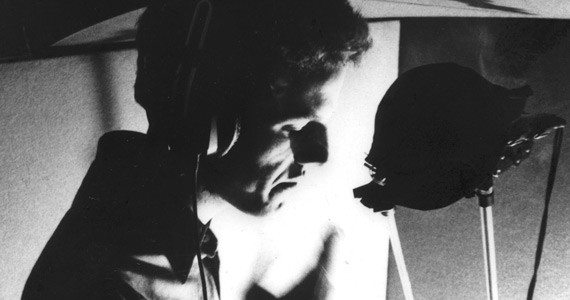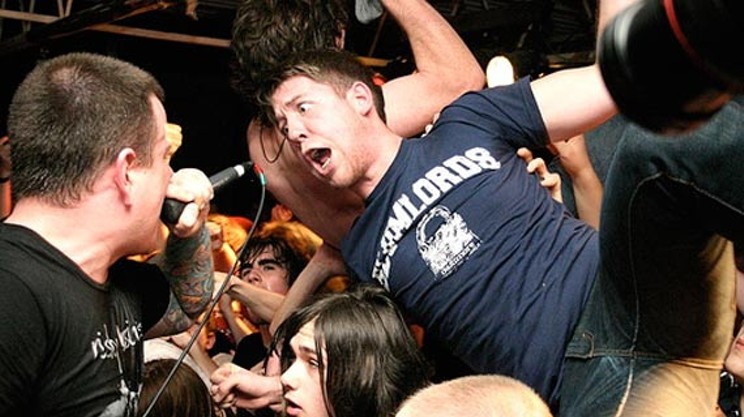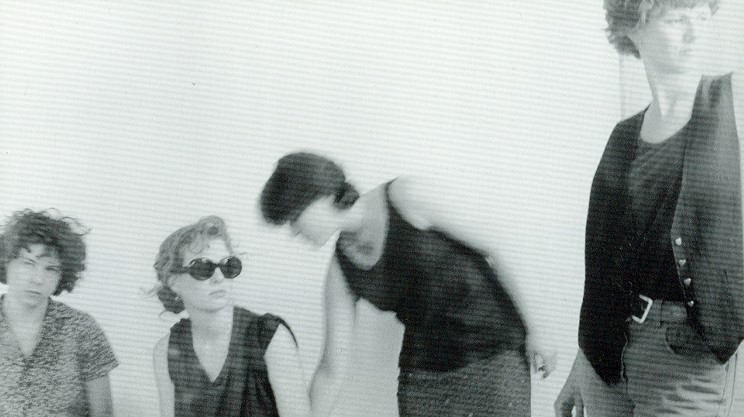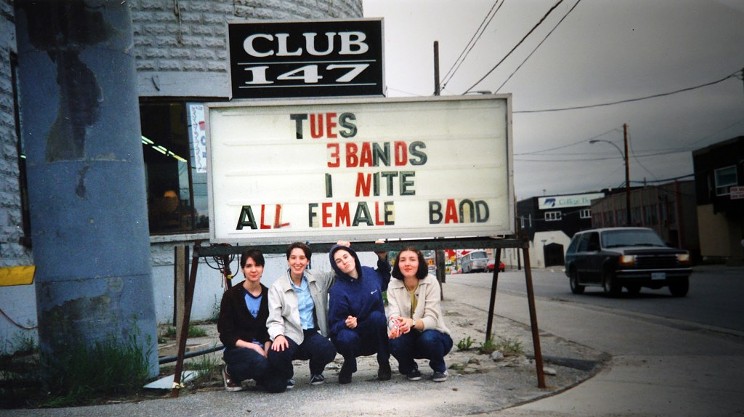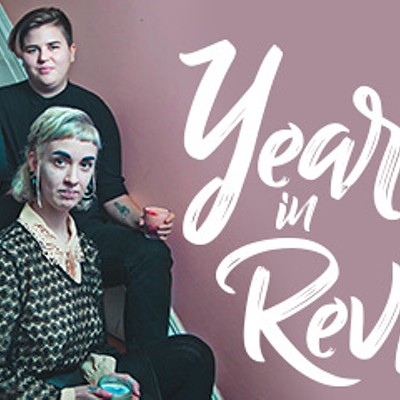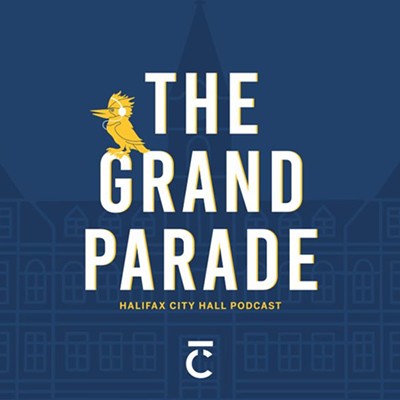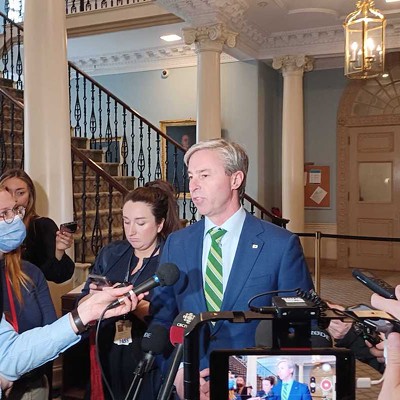Summing up 20 years of music in Halifax is a rough task. Confining it to a single volume of books would be tough. The Coast's very first issue, published June 17, 1993, is very near and dear to my heart for a few reasons, one of which is that the cover featured all-female rock-pop band jale. If I hadn't listened to or seen jale live as a young kid living in Bedford, I never would have started playing music. Because of bands like jale and Plumtree---where I first saw female musicians playing live and in a greater capacity than a vocalist---as well as Sloan, Super Friendz and Thrush Hermit, I started taking an active role in the music in my community that shaped the way I grew up.
Local music can mean a lot of things to a lot of people. It could be stadium shows once or twice a year, cover bands in the background every weekend or a near-obsessive collection of local albums and never leaving the house without earplugs in your purse. I took that last path and threw myself into it---from volunteering at murderecords at age 16 to today, where I edit the music and arts sections of The Coast. I'm not going to lie, being a 32-year-old woman at the all-ages show can feel weird, but it's what I know and what I love. Now grab your earplugs.
1993-98: The New Seattle
It's unthinkable to consider the past two decades without mentioning the boom of the New Seattle. Harper's Bazaar led the way, describing impossibly cool plaid-clad bands all on their own on a peninsula in the middle of the Atlantic, penning loud-quiet-loud grunge hits. It's an old, almost horse-beaten-to-death story, but it kickstarted a wave of industry in Halifax music, the reverberations of which are still felt today.
The Halifax Pop Explosion began in 1993. Sloan had a song on Geffen's DGC Rarities: Vol. 1, covering two songs by Moncton's finest, Eric's Trip. (Other acts on the compilation included Nirvana, Sonic Youth and Beck.) Sub Pop was snapping and it felt like everything was happening. Sloannet users felt validated. Wednesdays at the Khyber went off with hip-hop fanatics in their PRO-Keds. Bills were diverse and mixed, featuring both indie bands and hip-hop bands, and thanks to Cafe Ole, kids could get in on the fun. It's easy to make an argument that a scene is only as strong as its all-ages crowd, and Cafe Ole's open-door policies gave brand-new bands their first stage, inspiring a generation of musicians to pick up an instrument. Because record stores hadn't yet gone completely belly up, in-store shows at R.O.W. (Records On Wheels, whose walls of band shirts furnished my wardrobe in grade 12), plus gigs at cafes like The Bike Shop, Dio Mio and Bob and Lori's, gave more options for young bands and fans.
1998-2004: Building on the buzz
Although the spotlight of major record labels' attention wandered, local bands played on. The strong all-ages scene followed through to 2004, with all-age spaces like The Crash Cafe, And, TKOs and The Pavilion hosting mixed bills. Indie labels popped up to keep putting out releases after murderecords showed everyone how it was done. Local record stores were still running strong, the Halifax Pop Explosion returned after a year's hiatus in 2000 (and a brief renaming as Halifax On Music). The dust cloud settling from the boom of the '90s allowed some breathing room. Bands were established and the inevitable moving to Toronto happened.
Haligonians raved away and waved some glow sticks around like they just didn't care. DJs had a real surge in popularity, one that continues today thanks to LaserSquid and the New Halifax. Hardcore took the driver's seat. Who cares about Sub Pop anyway? Bands like The Plan and North of America forged new ground and ushered in lots of post-punk and math-rock, which in turn flowed into mindblowing experimental genres that typify Halifax music today.
2004-09: Experimentality
The music scene is cyclical. The previously thriving scene aged a bit, resulting in fewer all-ages spaces but more bars, and not all of those were long lived (Stage Nine, sniff). Fun but short-lived genres (movements?) like crazy wave and dance punk brought a lot of excitement to live shows. The inaugural OBEY Convention, courtesy of Divorce Records' Darcy Spidle, brought a focus to experimental and outsider music, putting Halifax on the map for more than just indie-pop and rock. This has continued with a vengeance. Weird Canada's Aaron Levin has called Halifax "the tightest and most inspiring community in Canada." Just Friends Records brought new nostalgia to the mix, locations like the One World Cafe opened their doors to any and all, acoustic music grabbed a bigger foothold and paved the way for festivals like In The Dead of Winter.
2009-13: The New Halifax
Music and art have come together really nicely these last few years---video art and live projections at shows, art installations at festivals---and although we've experienced venue droughts, there's not been a lack of creativity. Fewer bars means more house shows and a stronger all-ages scene.
There are a lot more cassettes and vinyl, coming full circle from the '90s in media, sound and dress sense. The mixture of a prolific younger generation (hi, Hot Money) with established artists who have been on their grind since 1993 or earlier (Al Tuck, The Lodge, INSTRUMENTS) makes for a pretty bright future. Gone are the days of multiple medium-to-large venues, but we've also got the same mixed bills as the early '90s. Making do with fewer venues isn't a new problem for this town, anyway. And everything comes around: The Marquee is newly re-opened, booked and managed by Greg Clark.
A future with a past
It's not easy staying in the same field you've been involved with since your early 20s. Many of the Halifax boom bands have either disbanded or moved, with the notable exception of Joel Plaskett, who has adapted and grown from upstart goofball into our provincial treasure. Or Charles Austin, from Super Friend to recording engineer at Echo Chamber. Or Jorun, who has quietly been slogging away in the hip-hop mines for years.
Local musicians have a rare sense of community. It's not easy to tour to other provinces, or for bands to come to us. We have to make our own fun out here---and that's where the magic happens. We may not have a huge population but we have a dedicated one. We're all in this together and there's a lot of crossover. And as any royal family worth its salt knows, crossover means good genes. And good genes make a good scene.
Arts editor Stephanie Johns started at the paper in 2004 as the front desk enforcer.

